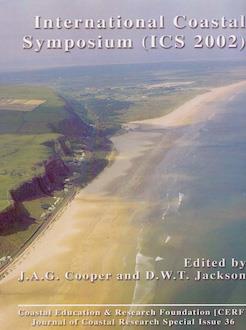The calculation of the degree of sediment disturbance through wave action in the surf and swash zone has been examined at various levels in recent years using a number of empirical techniques. Quantifying ‘depth of disturbance’(also know as sediment mixing depth) enables a better understanding of nearshore processes, where interaction between sediment and surf zone wave action is complex. Better understanding of how sediment responds to given surf and swash zone parameters is paramount in examining a number of phenomena such as natural beach evolution, sediment movement around engineering structures, the design and planning of beach renourishment schemes, and the monitoring of pollution behaviour. Previous empirical studies have concentrated their efforts in various methodologies such as the use of sediment tracers to mark the sediment, depth of disturbance rods deployed over a tidal cycle and the use of plug-holes filled with marked sediment.
All efforts at estimating sediment disturbance in the field to date have resolved their measurements only after a complete tidal cycle and have been unable to measure processes during the actual perturbations caused by wave action within the tidal event, an essential period of activity to understand bed elevation patterns. This paper seeks to address the present shortfall in methodology with the design and construction of a new, high resolution, vertical measurement system. The new instrument, a Sediment Activity Meter (SAM), characterises surface elevation changes in the sediment bed of the surf zone at a given deployment location at approximately 2 minute sampling intervals. This technique will, for the first time, enable realistic comparisons to be made between bed change and the main forcing variables of the system during a tidal cycle.
The paper mainly outlines the basic design of the new field instrument and describes, for the first time, surf zone seabed elevation changes (at a single point) measured at approximately 2-minute intervals alongside corresponding wave parameters and water depths within the surf zone. The field trials took place on a high-energy beach system in Northern Ireland.





